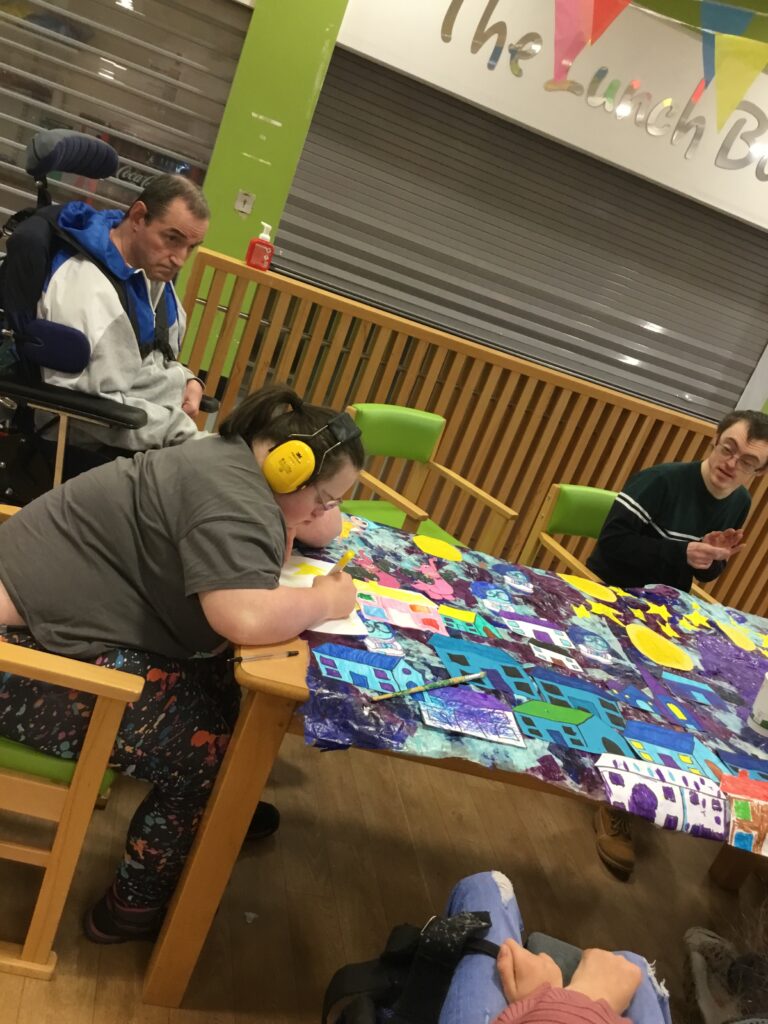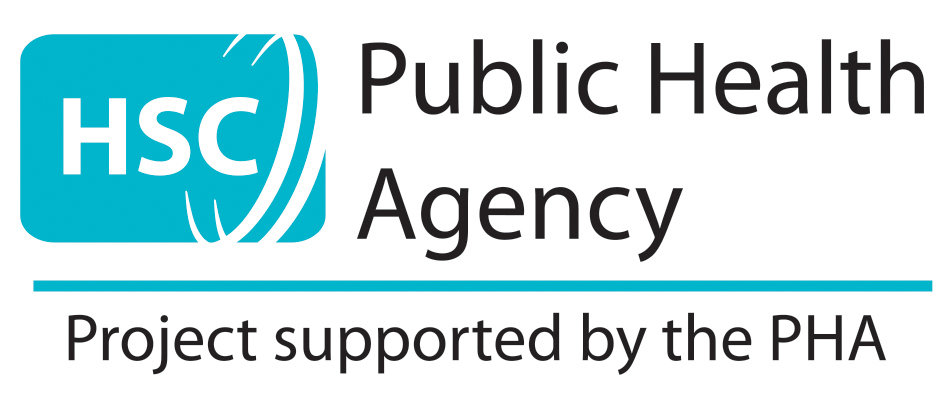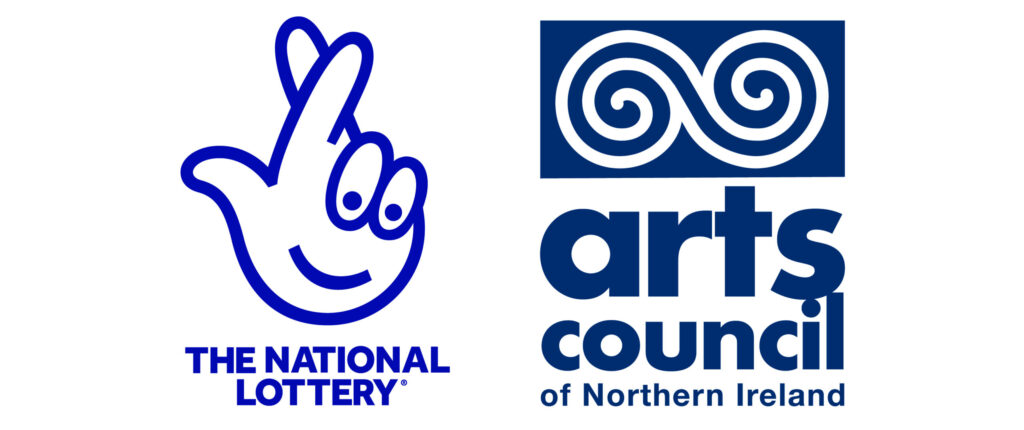It’s Not Easy to Put into Words
Fionnula Totten, Assistant Manager at Everton Day Centre, reflects on the profound impact that art-making sessions with Arts Care artist Frank Holmes have had on their service users, particularly those with complex needs.
When I ask Fionnula Totten, Assistant Manager of the Everton Day Centre in Belfast, about the impact art-making sessions with artist Frank Holmes have had on their service users, she responds succinctly with a phrase that comes up time and time again when I interview centre managers. “It’s not easy to put it into words.”
The Impact of Art on Service Users
And I know exactly what she means – the impact is obvious, but difficult to specifically quantify beyond participation numbers. However, there is something magical that happens, and this time we dig hard to find what exactly it is.
An Inclusive Approach to Art-Making
At first we start easy, and discuss participation. Everton Day Centre provides care and daytime activities for people living with a range of challenges including learning difficulty or dementia, and who often present with additional mental and physical health care needs. It is clear that Arts Care artist Frank Holmes has done a great job with this during his time at the Centre.
Fionnula tells me that they had gathered a range of service users in the group, drawn from regular centre attendees and outreach group members, so the levels of ability that had come together had varied widely.
However, the staff had been delighted at how Frank had managed this challenge, adapting activities so that everyone who came into the space was enabled to take part, at whatever level was appropriate for their particular ability. Challenges in Providing Creative Activities
Fionnula tells me: “We have some service users with complex disabilities, who due to their physical needs, may not always be able to join in with sessions or classes. But Frank engaged people at all levels.”
Fionnula also tells me that, understandably, her staff tend to provide activities in the centre that are within their own areas of interest or strength, so they may not offer as much art as the service users would like.
She says: “We know what our service users want to do, but given the challenges of different ability levels, it can be difficult even just to have the imagination to be able to work out different ways to allow everyone to participate so no-one is left out. Even just having the staff numbers to be able to facilitate the sessions can be challenging, never mind the time to plan, prep and deliver the sessions.”
“Having someone who has the ideas and the experience to be able to deliver these sessions is really invaluable.”
The Power of a New Perspective
As we talk on it becomes clear that the benefit of having Frank’s input extends to beyond the practicalities of session delivery however. “A new face is always welcome. We always find that an artist coming in will get a much more positive reaction than our regular staff.
Even though we have good relationships with our service users, that can look at us and think ‘Oh no, not her again…’ so having someone new generates so much interest. And Frank has such expertise and such a positive outlook and way of working, he is able to keep that motivation going.”
Lasting Impact on Mood and Atmosphere
And so we begin to get to the crux of the benefit of rank’s input into the life of the centre and the experience of their service users. “When Frank has been in, service users tend to be in a cheerful mood, and we find that can last the whole day. I can think of one service user who was always particularly delighted that it was a ‘Frank day’, and they looked forward so much to the sessions that their mood was lifted for the whole day.
Another service user had a particularly short attention span, but we found that she was able to stay with Frank much longer than she had settled elsewhere. That was new for us to see – she was much more focussed than we had seen previously.
“That kind of impact has a huge impact on the centre – the other service users and the staff. It is extremely valuable. You can feel it in the air – everyone is happy, the banter is better…! And people are just easier to work with throughout the day. The converse is also true then too – when people can’t take part in sessions for some reason they can be more agitated and less cooperative. Either way, it impacts the whole day.”
A Letter of Thanks
Following our conversation, Fionnula sends me an email, with a letter that one staff member had written to Frank, following their sessions with him. I have permission to share it here. Perhaps it is still difficult to put the impact of these types of opportunities into just a few words, but this letter, I believe, makes a good start.
“Your dedication to using art as a means of healing and empowerment is truly inspiring, and I have personally witnessed the positive impact it has had on the individuals in my group. I have numerous examples that illustrate the impact of your work.
For instance, there was a time when you provided support to a grieving lady, who initially felt hesitant but eventually looked forward to your sessions. Additionally, you modified equipment to ensure that all the service users felt fully involved. Your efforts also led to the creation of an inclusive environment where everyone can freely express themselves, regardless of their abilities.
“Your ability to create a safe and nurturing environment where individuals can explore their emotions and express themselves through art is a testament to your compassion and skill. This environment you create is a crucial part of the holistic care of individuals facing physical and mental health challenges, and your role in this is truly remarkable.
“Your commitment to helping others discover their inner strength and resilience through creativity is invaluable. Your unique approach to art therapy is a beacon of hope and healing in the health and social care community, and I am grateful for the positive changes you bring to the lives of those you work with.”
Case Study by Ali Fell on behalf of Arts Care






